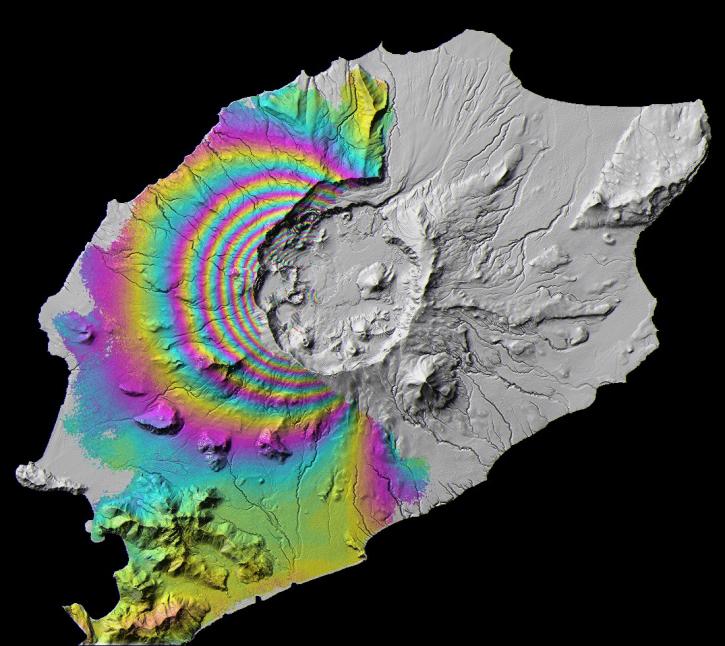Content from all Earth science data sites are migrating into this site from now until end of 2026. Not all NASA Earth science data will appear across the site until then. Thank you for your patience as we make this transition.
Read about the Web Unification Project
Landslides Data Access and Tools
From discovery to visualization, data tools such as Earthdata Search, Hazards Mapper, and Worldview guide users in making the most of landslide data.
Table of contents
Landslides Data Tools
| Tool Sort descending | Description | Services | |
|---|---|---|---|
| AppEEARS | The The Application for Extracting and Exploring Analysis Ready Samples (AppEEARS) offers users a simple and efficient way to perform data access and transformation processes. | Search and Discovery, Subsetting, Customization, Downloading, Visualization | |
| Panoply | Panoply is a cross-platform application that plots geo-referenced and other arrays from netCDF, HDF, GRIB, and other datasets. | Visualization, Customization, Reformatting, Subsetting, Comparison | |
| Vertex | Vertex is a graphical search interface for finding synthetic aperture radar (SAR) data. | Search and Discovery, Access, Downloading, Processing, Subsetting | |
| Worldview | Worldview offers the capability to interactively browse over 1,200 global, full-resolution satellite imagery layers and download the underlying data. | Analysis, Search and Discovery, Visualization |
SHOWING 4 OF 4
Featured Landslides Observation Method: Sentinel-1 C-SAR
The Synthetic Aperture Radar (SAR) aboard the ESA (European Space Agency's) Sentinel-1A/B satellites provides continuous all-weather, day-and-night land imagery. SAR images can be combined to produce interferograms, which are images showing changes in land height or position associated with landslides, avalanches, and rockfalls.
Join us Jan 25 at 2 p.m., ET [UTC -5], to learn how to use the Alaska Satellite Facility's OpenSARLab to work with synthetic aperture radar (SAR) data in the cloud.
Synthetic Aperture Radar (SAR) Data from NASA’s ASF DAAC helps scientists like Dr. Steve Bowman provide Utah’s citizens with timely scientific information about the state’s geologic hazards.
Dr. Williams aims to use interferometric synthetic aperture radar (InSAR) to determine the speed of every glacier on the planet.
Datasets
| Dataset | Size | Start Date | End Date | N Lat | S Lat | E long | W Long |
|---|---|---|---|---|---|---|---|
| SENTINEL-1A_SLC | 90.00 | -90.00 | 180.00 | -180.00 | |||
| SENTINEL-1A_SINGLE_POL_METADATA_GRD_MEDIUM_RES | 90.00 | -90.00 | 180.00 | -180.00 | |||
| SENTINEL-1A_SINGLE_POL_METADATA_GRD_HIGH_RES | 90.00 | -90.00 | 180.00 | -180.00 | |||
| SENTINEL-1A_SINGLE_POL_METADATA_GRD_FULL_RES | 90.00 | -90.00 | 180.00 | -180.00 | |||
| SENTINEL-1A_SINGLE_POL_GRD_MEDIUM_RES | 90.00 | -90.00 | 180.00 | -180.00 | |||
| SENTINEL-1A_SINGLE_POL_GRD_HIGH_RES | 90.00 | -90.00 | 180.00 | -180.00 | |||
| SENTINEL-1A_SINGLE_POL_GRD_FULL_RES | 90.00 | -90.00 | 180.00 | -180.00 | |||
| SENTINEL-1A_RAW | 90.00 | -90.00 | 180.00 | -180.00 | |||
| SENTINEL-1A_OCN | 90.00 | -90.00 | 180.00 | -180.00 | |||
| SENTINEL-1A_METADATA_SLC | 90.00 | -90.00 | 180.00 | -180.00 |
Frequently Asked Questions
Earthdata Forum
Our online forum provides a space for users to browse thousands of FAQs about research needs, data, and data applications. You can also submit new questions for our experts to answer.
Submit Questions to Earthdata Forumand View Expert Responses

